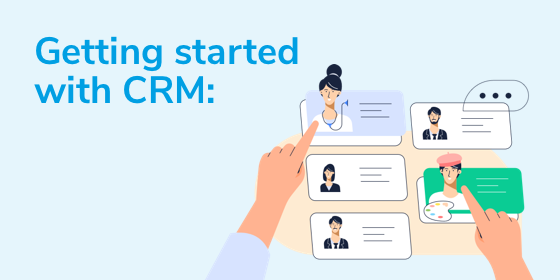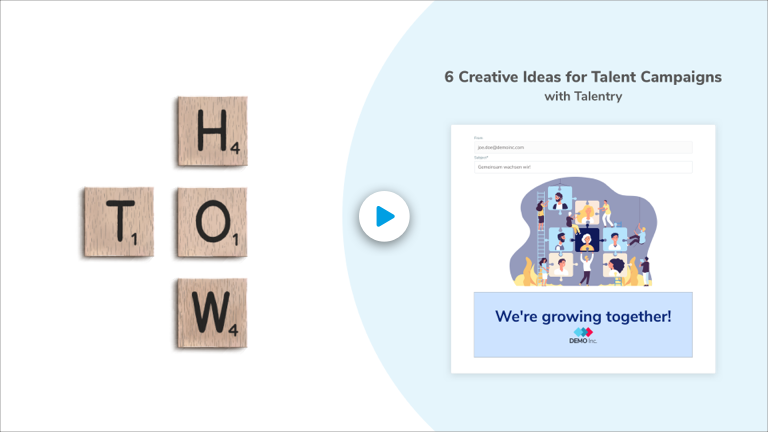Does your recruitment team have the software tools it needs?

That depends on your growth strategy, which changes over time
According to Capterra, 75% of hiring and talent managers use recruiting software and/or applicant tracking software when hiring. Chances are you are one of them. But are you using the right tool? The market for recruitment software is growing by count, diversity, and approach—and each year Josh Bersin publishes new trends in the HR tech world. But is this the right moment to buy that “fancy stuff”?
Choosing a recruiting software
Choosing the right recruiting software is all about looking for something that aligns with your business’s needs. But those needs evolve over time. Your objectives—and challenges—will change.
One size clearly does not fit all. Given the diverse nature of how talent acquisition functions need to operate, you need elements that could be mixed and matched. Nowadays, recruiters work within an ecosystem, using different recruitments tools. The best recruiting software is going to depend on the size of the company and staffing needs, the industry, and the specific recruiting strategy it pursues.
What do you really need?
You need to start by reviewing your company’s recruitment soft spots, and the business priorities and initiatives that can boost your performance. You may need, for example, to:
- Hire proactively, source, and build talent pools.
- Reduce cost and time to hire.
- Provide a great candidate experience.
- Build your brand and attract passive candidates.
- Create the perfect interview and assessment process.
- See comprehensive analytics on your whole process.
Ask yourself: What sort of candidates do you recruit? Think about the kind of candidates you wish you had more of. How do you want to recruit them? If your company’s priority is to attract more qualified candidates, it makes sense to focus on solutions that provide candidate experiences that attract top talent and keep them engaged throughout the hiring process. But don’t just get new software. It must always be connected to your recruiting strategy:
- Do you, for example, actively promote employee referrals?
- Do you want to leverage social media recruiting?
- Is your top priority to build up specific high-quality talent pools?
- Has content marketing recently emerged on your agenda?
Achieving everything at once is complicated. You should have a priority and/or a plan for software purchases—a plan that’s aligned with your company growth strategy.
To automate or not to automate?
Most startups use Excel to organize information about employees and (potential) candidates. Let`s assume you have a few open positions per year. That could mean your efforts to implement and maintain recruiting software may exceed the benefits. Remember the main automation rule: If you want automation – you should have something to automate.
That means you should have at least one person doing something that can be automated. Something to which a digital solution can add value (e.g. compared to Excel) and enhance the user experience by making work more productive. The software is a tool. But it is most effective when the content mirrors the human experience in meaningful ways. This also means that people throughout the organization need to take ownership of their part in the process of selecting, implementing, and using the software.
When is the right time?
Buying software is a strategic decision, and you would expect to drive value from it over time. Software implementation plans work in tandem with talent acquisition team growth. To avoid duplication of efforts and too much workload, make sure you define the specific roles and responsibilities of your employees.
Usually, an HR team is planned based on the HR to employee ratio which is 2.6 according to the Society of Human Resource Management. However, in recruiting teams, it’s a different story. Because every recruiter is related to a number of job requisitions and the number of those might change. So, it depends not only on the present number of employees, but even more on the future, and how quickly your company is about to scale.
- Do your recruiters have to close 3 or more vacancies per month? Then you might want to empower your recruiting to be more efficient and handle more vacancies by using automation tools.
- Do you employ 3 or more recruiters already? You should definitely go for automation!
- The same concept applies to all talent acquisition functions – for example, sourcing, branding, interviewing, and so on.
Company and team readiness
Regardless of the model you build, if you’re going to optimize the acquisition of talent, certain things are fundamental to your approach.
As a startup, your company wants to be flexible and needs only basic candidate tracking capabilities. Usually, you start with an HR generalist and – if you can afford it – one or more dedicated recruiters who do everything at once.
When you reach the growth stage, however, performance is king. You want to increase the number of recruiters, agencies, sources, recruiting coordinators—fast. You empower major processes and structure them with an ATS. You add additional recruiting sources and incorporate them with CRM. You speed up your application and recruiting funnel (or the recruiting wheel, if you already have it in place) with assessment tools, job board aggregators and improve the candidate experience.
The optimize phase is about doing everything in the most efficient way. You improve specific talent acquisition functions with best-of-breed specialized software and such dedicated roles as campus recruiting, branding specialists, event managers, resource managers, analysts, the center of excellence officers.







